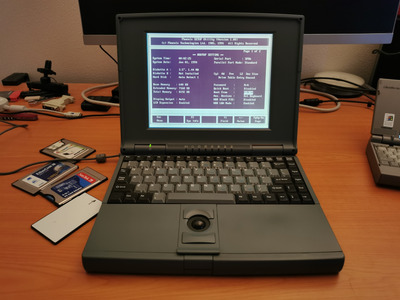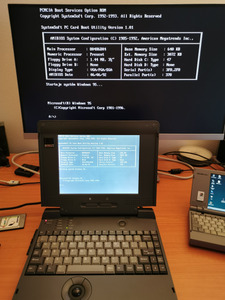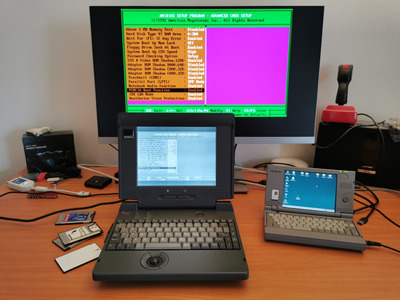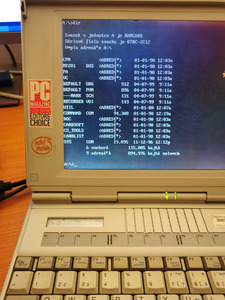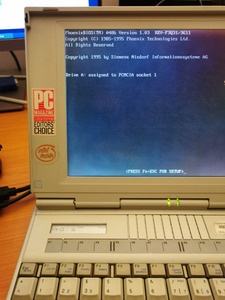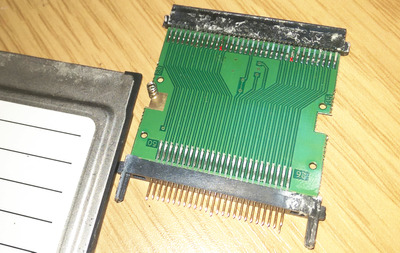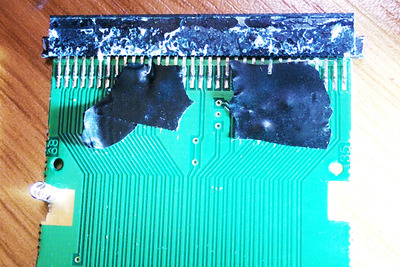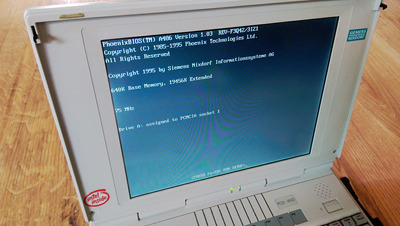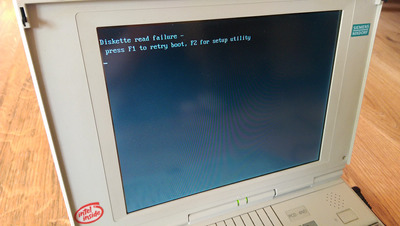First post, by diagon_swarm
- Rank
- Newbie
Siemens-Nixdorf PCD-4ND was my first own PC laptop decades ago and it was the only laptop I knew, that had “PCMCIA” as a boot option (in addition to a hard drive and floppy drive). However, I was not able to get this option working, because this laptop always froze if any standard ATA PCMCIA card (or CF) was inserted.
I recently repaired one Olivetti Quaderno PT-XT-20 and used an old PCMCIA 1.0 4MB SRAM card as a storage (the machine itself boots from ROMDOS). I never used these PCMCIA 1.0 (linear non-ATA flash and SRAM) memory cards before, so decided to give it a try in the PCD-4ND.
To my surprise, the computer can boot from it. The Phoenix BIOS used by Siemens-Nixdorf is equipped with a BIOS module, that mounts a PCMCIA 1.0 memory-mapped card to A: and starts an operating system from it. The internal floppy drive is moved automatically to B:. DOS works flawlessly this way and programs have no issues working with the A: drive.
However, the BIOS module is loaded only if the PCMCIA is selected as a primary boot device. There is no way to have driver-less access to the card under DOS, if you boot from any other device.
-
So, I am thinking… Did any of you use PCMCIA boot on a PC? (beyond special floppy drives and CD-ROM with small computers like Aero, Libretto and Portégé).
From my experience, most PC laptops did not offer PCMCIA boot. I went through my collection and found two no-name 486 laptops, that also have PCMCIA support in BIOS. One has the AMI BIOS and if the PCMCIA boot support is enabled, it allows to boot from PCMCIA 1.0 cards (ATA cards are ignored in boot). If the DOS is booted from the SRAM card, it works with simple programs, but file managers and more complex programs either refuse to start, or they freeze the computer. It seems that the support is not so good here.
The other laptop has Phoenix BIOS (different version than PCD-4ND), but once the system starts booting from the SRAM card, it hangs with floppy drive doing a lot of noisy sounds, every time the computers touches the card.
